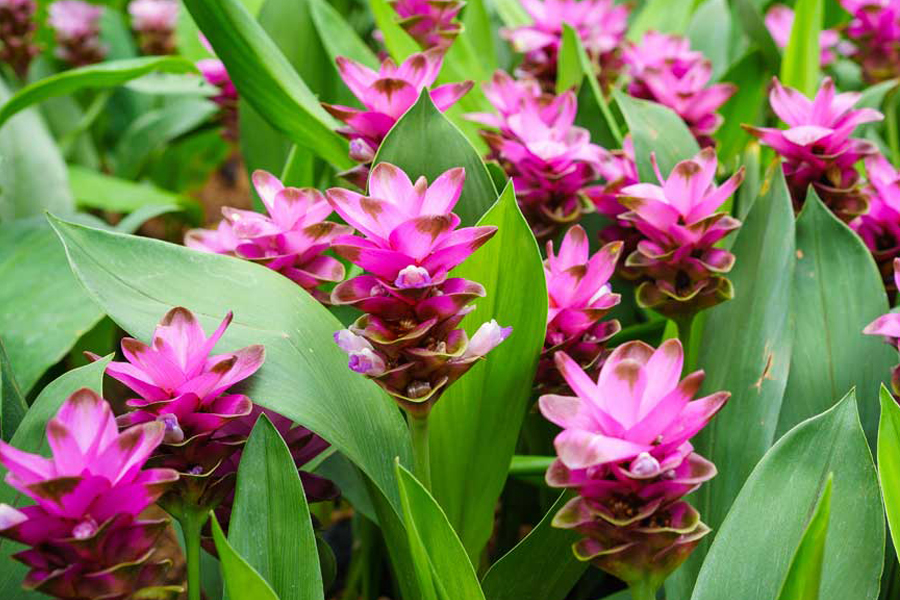
TURMERIC: “SAFFRON OF INDIES”
Also known as Indian saffron and golden spice, turmeric has been used as a spice for thousands years in traditional oriental medicine, religious practice and especially in the kitchen. The origin of the name is controversial: one hypothesis is that the term turmeric derives from the Arabic Kourkoum, (saffron, in fact), while the English equivalent turmeric from the Latin terra merita (worthy land) as if to indicate a product of the land which deserves to be cultivated.
A testimony of its spread already in ancient times is Marco Polo who, telling his travels in China in the 13th century, describes Turmeric in terms of "a vegetable that has all the properties of real saffron, as well as color, but that it is not true saffron” and continues stating that this spice “is held in high regard, and it is an ingredient in all their dishes”.
Even today in Asian countries its use is very common, but for what reason?
According to Ayurvedic medicine, turmeric has purifying therapeutic properties, so much so that it is used to treat fever, infections, arthritis, dysentery and other liver problems.
A particular molecule present in turmeric - curcumin - which would have a fundamental role in contrasting the development of certain types of cancer and would have anti-inflammatory, antioxidant and protection effects on cellular aging, is of interest to scientific research conducted in the laboratory.
In addition, some studies show interesting data regarding the control action of curcumin on blood glucose. Finally, in India turmeric is also known for its healing and antiseptic action and it is used to treat wounds and skin diseases and to relieve the burning of sunburns and insect bites.
But where is it extracted from?
The golden spice is obtained from Curcuma Longa, a perennial herbaceous plant that could surprise those who do not know it because of the beauty of its many flowers, pink or white, which make it perfect for being grown at home not only for culinary purposes, but also as an ornament.
Specifically, the area of interest for the production of the spice is the rhizomatous root, that is the portion of the stem partially buried from which the roots depart. It is a part of the plant composed of large cylindrical rhizomes, very branched, with a typical yellow color tending to orange and with a strong aroma.
How is Turmeric grown and how is the spice made?
Since it is a perennial plant of tropical origin, turmeric loves heat and humidity: for this reason, pot cultivation is ideal, because it protects the plant from frost, especially in the winter during which the turmeric roots, if exposed outdoors, could be compromised and therefore they could not start again the next cycle.
You can choose two different ways to grow turmeric in pots:
1) bury the rhizomes;
2) purchase an already formed map.
In the first case, it is possible already in March to proceed to bury the rhizomes which, after about a month, will sprout developing the new vegetation.
In the second case, however, increasingly common due to the use of turmeric also as an ornamental plant, we expect the end of April, when the temperatures are more stable and mild, to take it home and transfer it to a larger pot.
Regardless of the road you decide to take, the choices of the pot and the soil are fundamental: it is preferable that the pot has a rectangular shape since the turmeric roots have a tendency to develop horizontally; as regards the soil, instead, it would be appropriate to prepare a mix consisting of ½ peat, ¼ of fine sand and ¼ of garden potting soil.
The rhizomes will be positioned 20 cm apart and at a depth of 6-7 cm. If, on the other hand, you decide to purchase a turmeric plant directly, it will be sufficient to respect the distance of 20 cm between one plant and another.
The roots of turmeric generally ripen 8-10 months after the beginning of the cycle, when the plant is already in the middle of winter, the leaves will be yellowed and will tend to wilt.
It is at this point that the root harvesting operation begins, which is carried out by digging in the soil and delicately dividing the rhizomes. It is advisable not to take all the roots if you want the cycle of the plant to start again in the following spring, giving life to new shoots.
In the event that you decide to consume fresh turmeric, you will simply have to clean it from the ground and keep it in the fridge for about 4 weeks. More commonly, however, turmeric powder is used, which is obtained through a not too complicated process: after collecting the roots, it is necessary to dry them in a dry and ventilated place for about a month, after which it is possible to pulverize the roots through a food processor. At that point, it is sufficient to store the turmeric powder in glass jars to be kept away from lights and sources of direct heat to have a completely organic arrangement of turmeric, which can be used both as a spice and as a kitchen dye.

 English
English Italiano
Italiano Español
Español Português PT
Português PT Français
Français Deutsch
Deutsch Polski
Polski Nederlands
Nederlands Svenska
Svenska
All comments